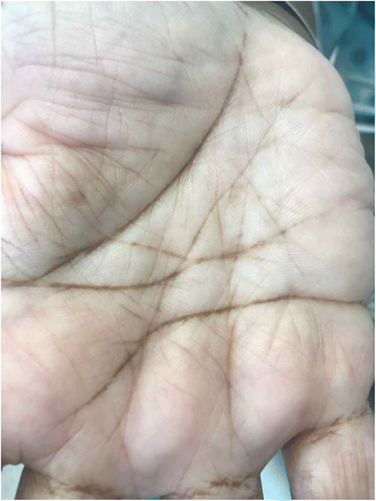A nurse is assisting with the admission of a client to a medical-surgical unit. Which of the following findings should the nurse identify as an indication that the client is malnourished?
Heart rate 89/min.
Pink mucous membranes.
Pallor with scaly skin.
Body mass index 23.
The Correct Answer is C
The correct answer is choice C. Pallor with scaly skin.
Choice A rationale:
"Heart rate 89/min." Heart rate within the range of 60-100 beats per minute is generally considered normal for adults at rest. This value doesn't specifically indicate malnourishment.
Choice B rationale:
"Pink mucous membranes." Pink mucous membranes indicate adequate oxygenation and hydration but don't necessarily reflect nutritional status or malnourishment.
Choice C rationale:
"Pallor with scaly skin." Pallor (pale skin) along with scaly skin can be indicative of malnourishment. Malnourished individuals may not receive adequate n

Choice D rationale:
"Body mass index 23." A body mass index (BMI) of 23 falls within the normal range (18.5-24.9), so it doesn't necessarily indicate malnourishment. However, BMI alone may not fully capture malnourishment, as it doesn't consider other factors like muscle mass and specific nutrient deficiencies.
Nursing Test Bank
Naxlex Comprehensive Predictor Exams
Related Questions
Correct Answer is D
Explanation
The correct answer is choice D: A client who has just experienced the death of their child.
Choice A rationale:
Offering silence to a client who plans to leave the facility against medical advice might not be the most appropriate therapeutic communication technique. Silence in this situation could be misconstrued as ignoring the client's concerns or not addressing their reasons for wanting to leave. Active listening and open-ended questioning would likely be more effective in understanding and addressing the client's concerns.
Choice B rationale:
A client who informs the nurse that they have made their funeral arrangements is expressing thoughts and emotions that might require sensitive communication. Silence in this context could be interpreted as neglecting the client's need for support and empathy. The nurse should engage in a compassionate conversation and encourage the client to share their feelings.
Choice C rationale:
For a client who tells the nurse that the night shift nurse did not bring their medication, silence would not be the most suitable response. This situation calls for clarification and action, as the nurse needs to address the medication discrepancy promptly. Engaging in open communication and resolving the issue is essential here.
Choice D rationale:
A client who has just experienced the death of their child is likely overwhelmed with grief and intense emotions. In this scenario, using the therapeutic communication technique of silence can provide the client with a supportive space to process their feelings. Offering a moment of silence acknowledges the depth of their emotions and gives them the opportunity to express themselves when they are ready.
Correct Answer is B
Explanation
Choice A rationale:
"You will need to sign a consent form before we begin the procedure." Rationale: While obtaining consent is an essential part of many medical procedures, including a bladder scan, it is not specific to the teaching related to the procedure itself. It addresses the legal and ethical aspect of the procedure but doesn't instruct the client on what to expect during the procedure.
Choice B rationale:
"I will place a gel pad directly above your pubic area before I place the probe." Rationale: This is the correct choice. Placing a gel pad above the pubic area before using the probe is an important step in ensuring proper ultrasound transmission and obtaining accurate results during a bladder scan. The gel pad helps to eliminate air gaps that could interfere with the quality of the scan.
Choice C rationale:
"You will need to hold your urine for 1 hour prior to the procedure." Rationale: Holding urine for an hour before a bladder scan might be required to ensure that the bladder is adequately filled for the scan, but it doesn't address the specific preparation related to the ultrasound procedure itself.
Choice D rationale:
"You will receive a contrast dye through an IV catheter prior to the scan." Rationale: Mentioning contrast dye and IV catheter is not relevant to a bladder scan. Contrast dye is often used in imaging studies like CT scans or angiograms, but not for a routine bladder scan. Therefore, this instruction is unrelated to the procedure in question.
Whether you are a student looking to ace your exams or a practicing nurse seeking to enhance your expertise , our nursing education contents will empower you with the confidence and competence to make a difference in the lives of patients and become a respected leader in the healthcare field.
Visit Naxlex, invest in your future and unlock endless possibilities with our unparalleled nursing education contents today
Report Wrong Answer on the Current Question
Do you disagree with the answer? If yes, what is your expected answer? Explain.
Kindly be descriptive with the issue you are facing.
